Paraguay is one of two landlocked countries in the Western Hemisphere (quick, try to guess the other without looking!), and is the only one where the native language (Guaraní) is understood by more people than the colonizers’ (Spanish). It follows, then, that both the content of the food as well as the cooking techniques have a pretty direct Guaraní legacy, though some Western ingredients like cheese and beef have weaseled their way in.
It turns out that Paraguay is a common Peace Corps destination; we had four guests who’d volunteered there! It was great to have their perspective, not just on the food but also about life both in the cities and way out in the country. I also never would have figured out how to make the drink that involves putting burning coals directly on sugar without Emily’s help.
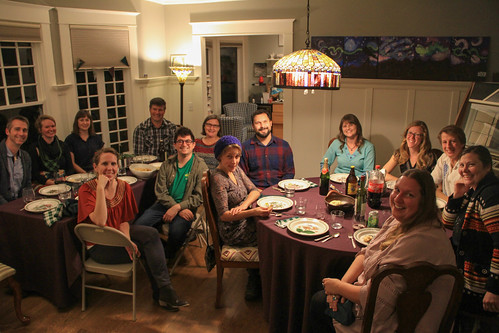
In addition to our Peace Corps volunteers Emily, Gina, Caleb and Ashley, we also had Lyndi, Lisa, Craig, Laura, and friends.
Note that, other than the dessert, this meal was naturally gluten-free.
Chipá | Cheese rings | Recipe
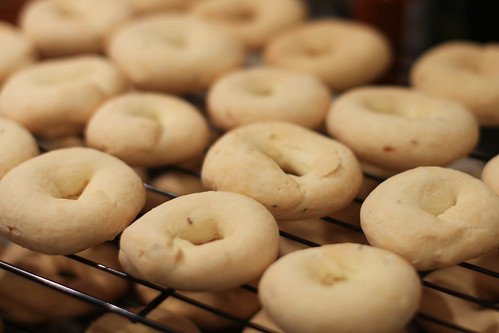
It looks like a little bagel, smells delightful when baking, and is about as soft as a teething biscuit. The returned volunteers report that these snacks are commonly found on long-distance buses, and it’s no surprise, because they last roughly forever and the cheese, fat, egg, and tapioca starch make these mighty filling.
Sopa paraguaya | Cheesy cornbread | Recipe
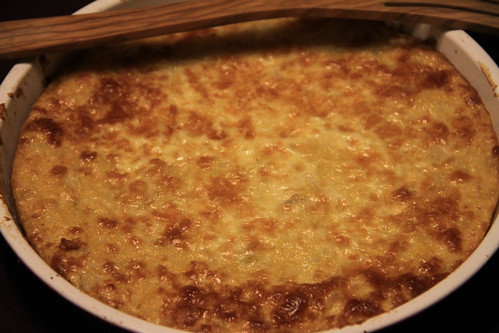
The legend behind this dish is that a chef making a really rich soup for a government official meant to put in a bit of corn flour as a thickener, but accidentally added way too much. So she decided to bake it rather than simply simmer on the stovetop, but the name “soup” stuck around due to its origin.
I’m not sure I buy it, but whatever you call it, this is one dense and tasty dish that’s somewhere between a casserole, an omelet, and a cornbread. There’s little in the way of seasoning; the flavor pretty much comes from all that cheese plus the corn. Apparently, it’s common to cook a big batch and keep the leftovers in the cabinet (since many Paraguayans don’t have refrigeration) for a snack or when company unexpectedly shows up.
Asado | Barbecue | Guidance
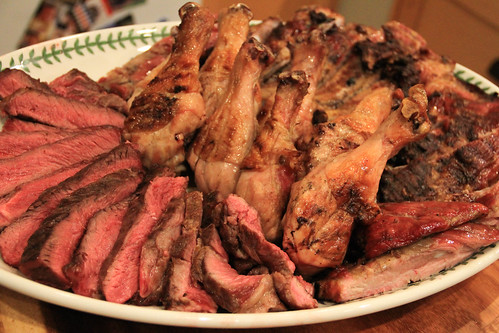
As with their neighbors the Argentinians, no good celebration or family get-together is complete without cooking a lot of meat with fire. In addition to the ribs, steak, and chicken pictured above, I also grilled up a big curl of chorizo, all of it from the Supermercados Mexico meat counter and seasoned with nothing more than salt and pepper. For all of the foofaraw around rubs and marinades, this very simply cooked, modestly priced meat was really, really good.
Yuca | Cassava
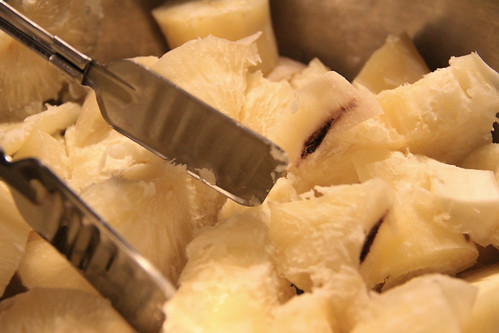
Nothing more than peeled, chopped, and boiled cassava, a root grown around the world in tropical regions but native to this area of South America. A cheap, lightly flavored, and belly-filling accompaniment to the asado. (Apparently a pasta dish called tallerín is also very common, but that just seemed like too much along with the sopa.)
Cocido | Burnt mate | Recipe
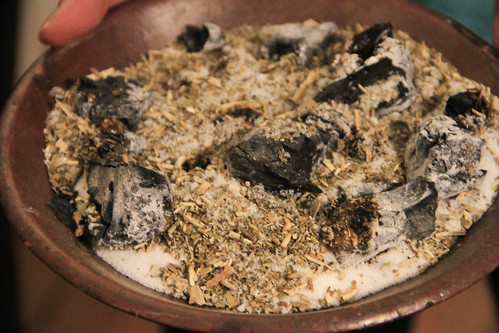
Along with the asado, Paraguay shares with its neighbors the penchant for mate, the grassy-tasting herb with a stimulating effect similar to coffee. But I was fascinated by this way of preparing it: put the dry mate and some sugar on a heatproof plate, and roll glowing coals from the asado (preferably ones that didn’t have meat drip on them!) directly on top to char the herb and caramelize the sugar. Then dump all of that in a boiling pot of water — coals included! — pour in some milk, and strain. It looks like mining effluent, tastes surprisingly good, and got me way too wired.
Alfajores | Cookie sandwiches
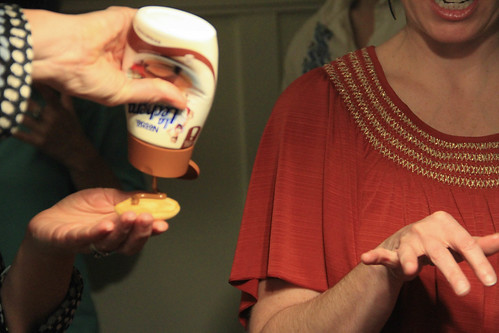
These are the most beloved dessert of southern South America: crumbly cookie sandwiches, filled with something sweet and covered with a dusting of powdered sugar. Dulce de leche is the classic filling, and as you can see above, it’s a lot easier (and less messy) to apply with a squeeze bottle than from the can. One of our guests baked the cookies so I don’t have the recipe, but I made some dulce de membrillo (quince paste) that made for another sort of filling.